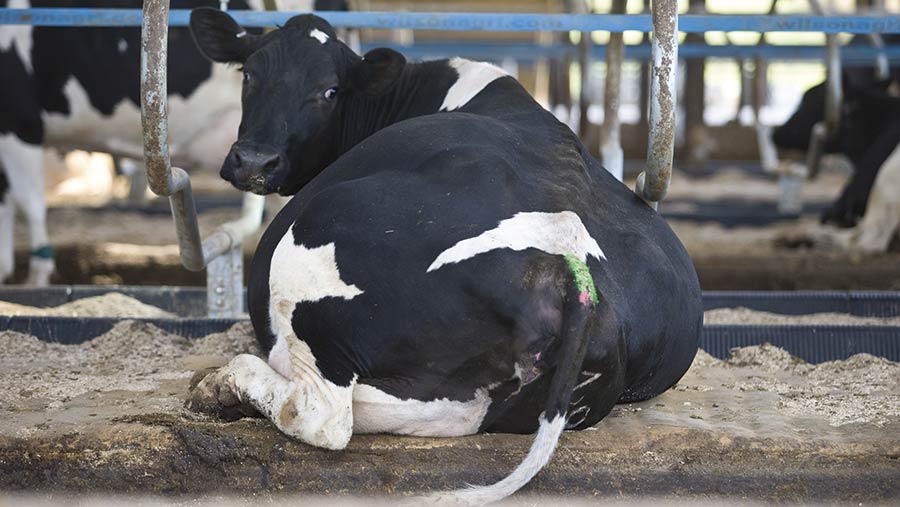Areas to focus on to improve dairy efficiency
 © Tim Scrivener
© Tim Scrivener Focusing on efficiency measures rather than cost-cutting should be the objective to establish what is eating away at your profits.
The last thing dairy farmers will want to be told is that they need to continue to focus on cost control, especially with rising prices.
Many dairy farms have made some huge strides, assessing all areas of expenditure and reducing their cost base when the pressure was on.
The current recovery in milk prices is long overdue and may feel like an opportunity to move away from cost control.
See also: Dairy farming news
However, while it is important farms retain that discipline, this can divert attention simply to cutting costs rather than addressing the losses that occur within farms in a more holistic way.
The activity that eats away at a farm’s profit potential often cannot be easily attributed to a specific expenditure item.
Address losses
Mastitis and fertility are two obvious areas, but there are many more. Cost control needs to be replaced with a philosophy of loss control on many dairy farms.
In some instances, spending more may even be more effective than spending less. For example, increasing the investment in heat detection.
The most effective way to continue to control expenditure while minimising the effect on productivity is to drill down into the areas of activity that cause losses in technical performance.
Once these areas are identified and quantified, steps can be taken to bring about improvements and help reduce cost of production.
In most cases, poor financial performance is a symptom of underlying inefficiencies. For example, high feed costs are, in most cases, symptomatic of poor forage quality.
Focus on feed
This winter, performance can be boosted by accurate feed analysis and balancing diets with ingredients selected on the basis of their relative feed value.
However, in the long run, it is only by investing in growing and preserving high-quality forage crops that performance will climb to the levels achieved by the best farms.
Another example would be fertility. If reproductive performance is poor, annual milk yield will fall, culling rates will increase and all associated herd replacement costs will rise.
Rather than cutting costs, such as stopping the routine vet visit to examine cows not seen bulling and to carry out pregnancy diagnosis, it may be more efficient to use the vet proactively, retain the visits and reduce the net cost of poor fertility on the business.
Make informed choices
When identifying areas for attention, the starting point should be to ask everyone involved with managing the herd, including external advisers, for their thoughts to help build an initial picture of where losses might be occurring.
Then use data to quantify what is going on. Herd and fertility records, up-to-date costings and management accounts are a good place to start.
Farms with accurate and easy-to-interpret records will be best placed to compare trends and assess how the farm is performing compared with top-quartile farms.
Compare performance
When comparing performance, always benchmark yourself against the best operators, never the average. Using as many KPIs as possible will help to build a clearer picture of what could be improved.
Challenge daily routine
Mr Adams stresses the importance of getting out and challenging everything that happens on a daily basis to minimise the losses that have been identified. On even the best-run units there are little things that eat away at profits and drilling into these areas is what will deliver future gains. Involving everyone will improve buy-in to the loss-reduction philosophy.
Setting goals and targets
To improve, you need to set goals and targets. Breaking improvements into manageable steps is critical to develop the habits that lead to sustained improvement. Then check and monitor progress.
Without monitoring, everything is left to chance and it will be too easy to slip back into old habits. Finding a clear and visual way to demonstrate the progress being made will help alert everyone to the importance of the change and allow them to see how quickly progress is being made.
It also makes it possible to quantify progress and acknowledge the part everyone is playing in making the improvements that have been targeted.
